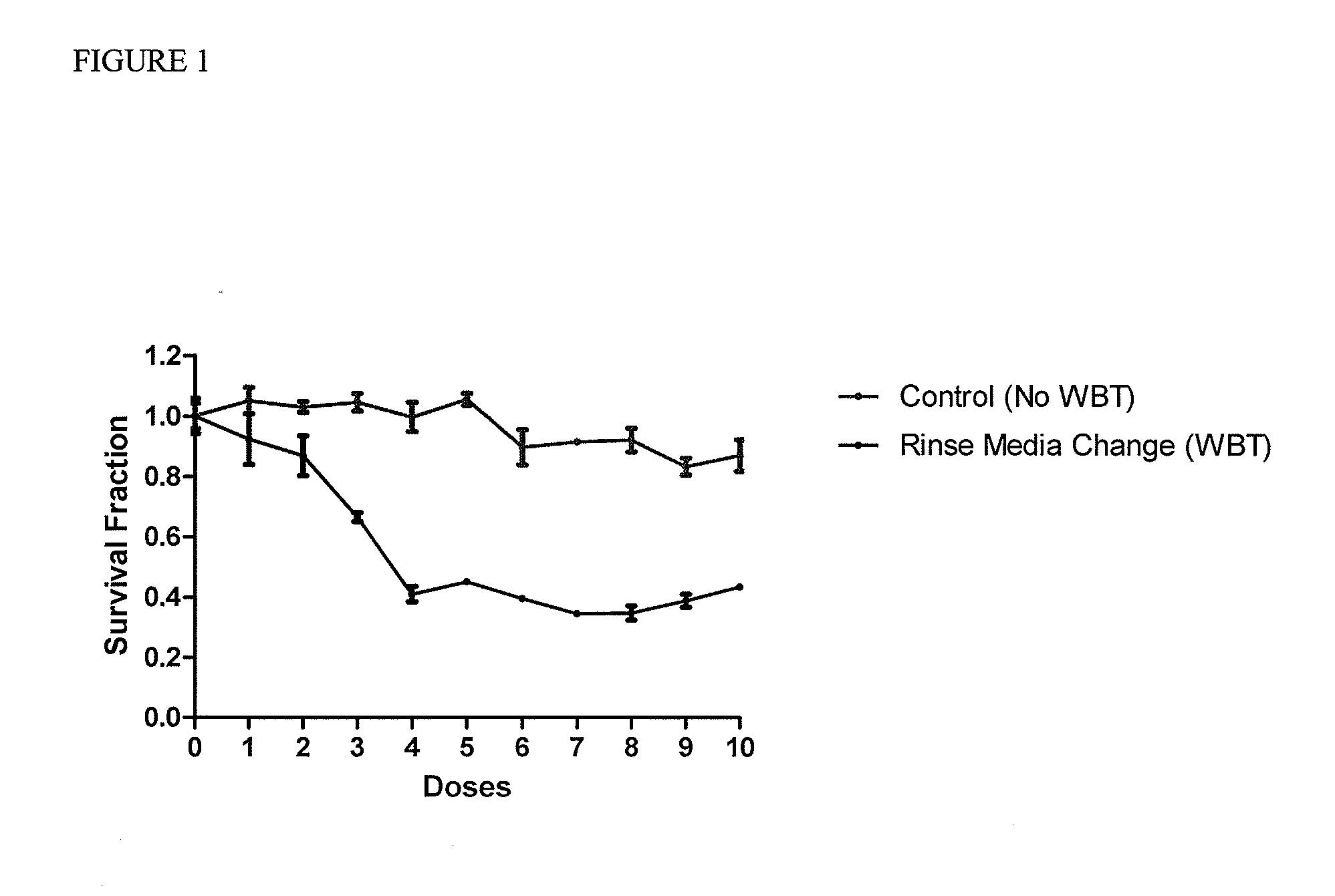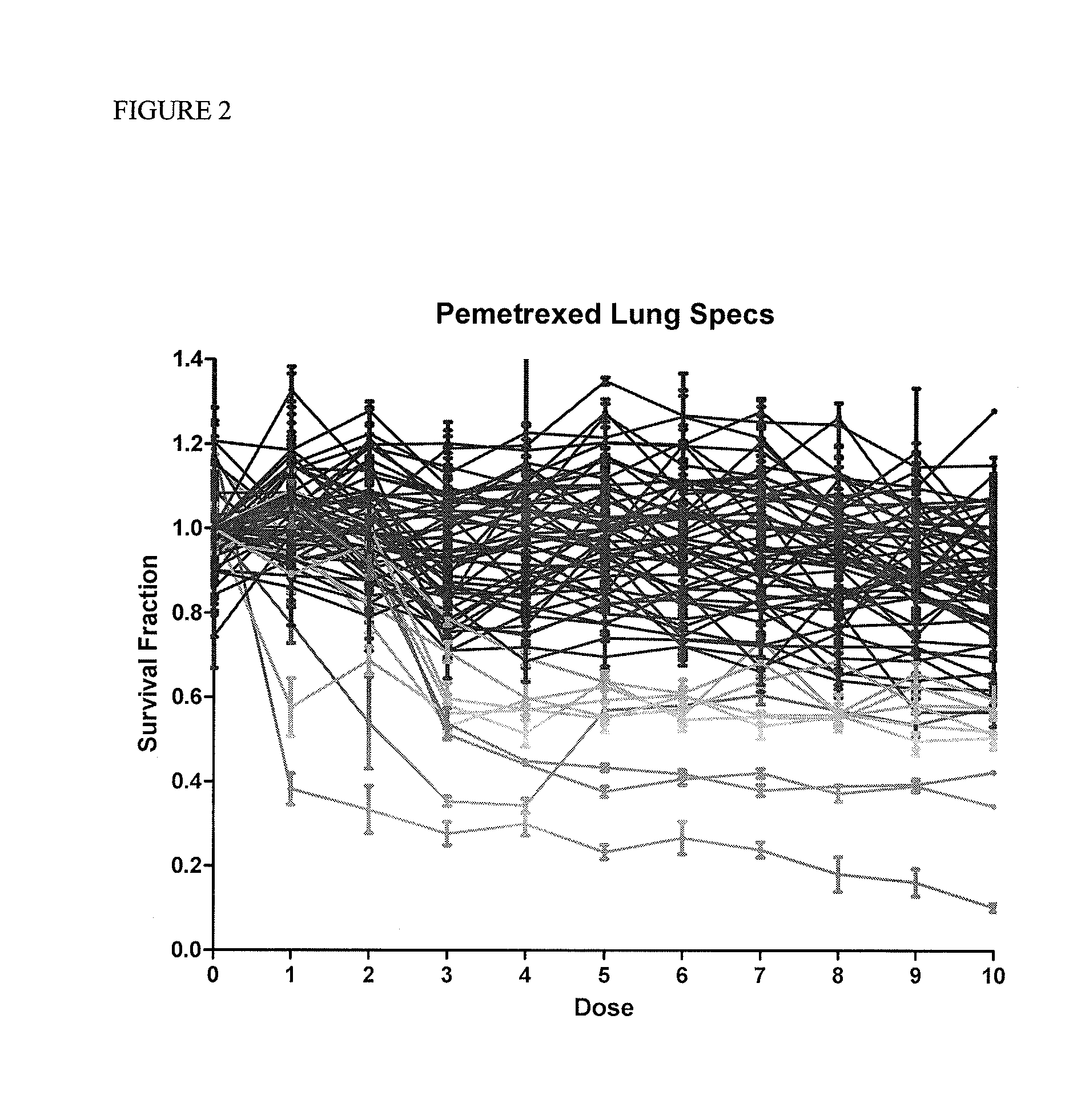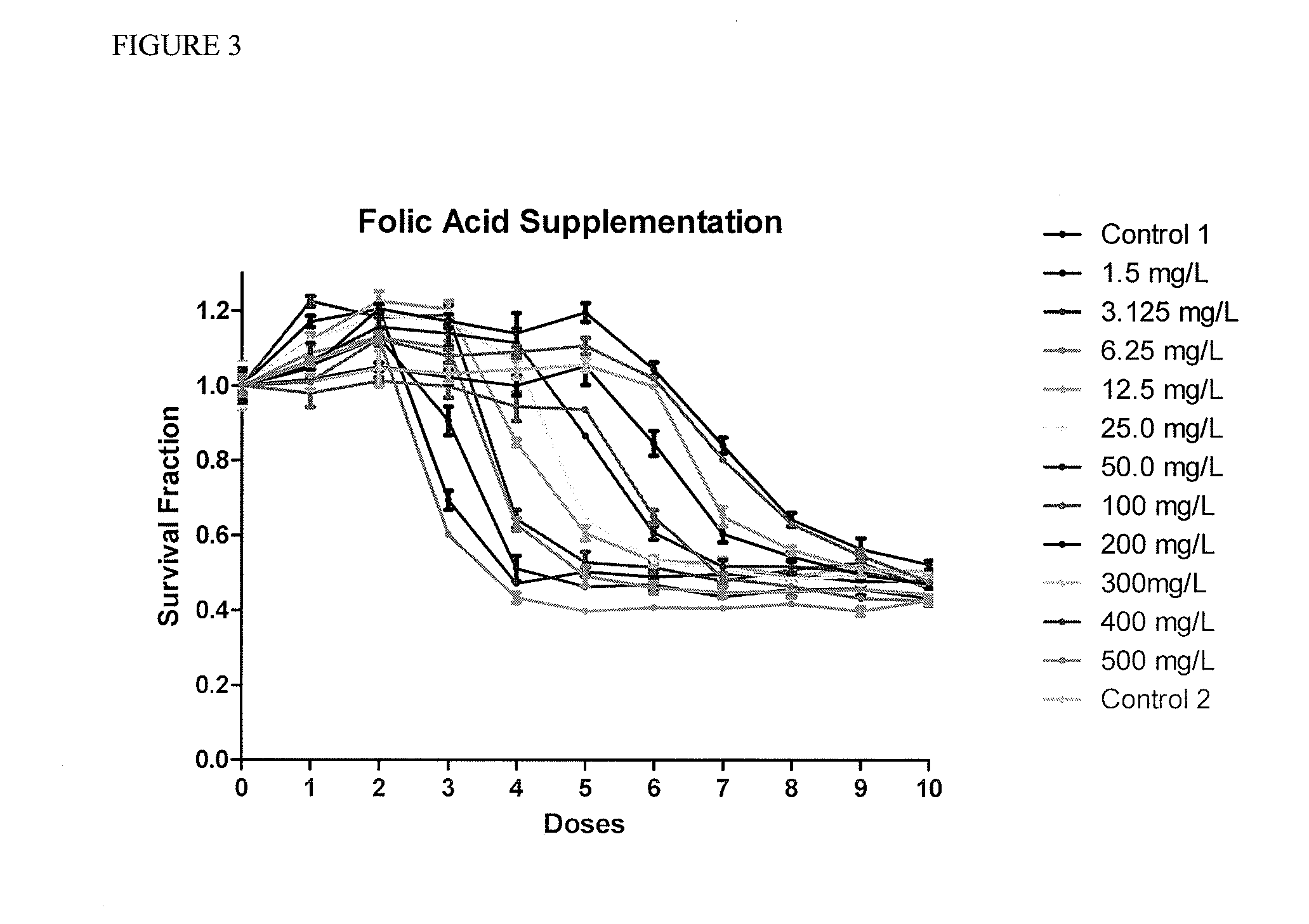Methods for predicting a cancer patient's response to antifolate chemotherapy
a cancer patient and antifolate technology, applied in the field of individualization of cancer treatment, can solve the problems of not producing reliable results for all chemotherapeutic agents, the effectiveness of antifolate chemotherapeutic agents such as methotrexate, and the inability to predict the response of cancer patients to antifolate chemotherapy, so as to avoid unnecessary treatment
- Summary
- Abstract
- Description
- Claims
- Application Information
AI Technical Summary
Benefits of technology
Problems solved by technology
Method used
Image
Examples
examples
Methods
The ChemoFx™ live cell chemoresponse assay was performed on 65 patient specimens and the cell line A549. The cells were treated with a 10-dose range of pemetrexed for 72 hours before DAPI-nuclear staining and counting. AUC (Area Under Curve) values were calculated and additional statistical analysis was performed on the resulting dose-response curves.
Folic Acid supplementation experiments were conducted. Pure folic acid was purchased from Sigma Aldrich, filtered, and prepared in a 100× concentration using RPMI media. The concentrate was added to RPMI media so that the final concentration of folic acid ranged between 1.5 mg / L and 500 mg / L. The cell line A549 was plated and treated according to the ChemoFx™ assay in the RPMI media containing increasing concentrations of folic acid. A control was also plated and treated at the same time.
The area under the dose-response curve (AUC) represents the survival fraction of cells in the presence of drug at each of the 10 increasing dose...
PUM
 Login to View More
Login to View More Abstract
Description
Claims
Application Information
 Login to View More
Login to View More - R&D
- Intellectual Property
- Life Sciences
- Materials
- Tech Scout
- Unparalleled Data Quality
- Higher Quality Content
- 60% Fewer Hallucinations
Browse by: Latest US Patents, China's latest patents, Technical Efficacy Thesaurus, Application Domain, Technology Topic, Popular Technical Reports.
© 2025 PatSnap. All rights reserved.Legal|Privacy policy|Modern Slavery Act Transparency Statement|Sitemap|About US| Contact US: help@patsnap.com



